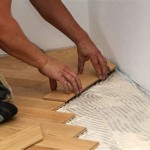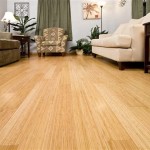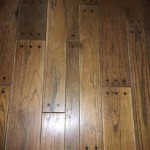Wide Engineered Hardwood Flooring: A Comprehensive Overview
Wide engineered hardwood flooring has surged in popularity, becoming a favored choice for homeowners, architects, and interior designers seeking a blend of aesthetic appeal, structural stability, and relative ease of installation. Unlike solid hardwood, engineered hardwood is constructed from multiple layers, with a top layer of genuine hardwood veneer bonded to a core of plywood, fiberboard, or similar materials. This composite construction offers several advantages, particularly noticeable in wider plank formats, which are often more susceptible to issues like cupping and warping in solid wood.
The "wide" designation typically refers to planks exceeding the standard 3-inch width, often ranging from 5 inches to upwards of 10 inches or more. This broader surface exposure emphasizes the natural grain patterns and character of the wood, creating a more spacious, open, and luxurious feel within a room. However, the choice of wide engineered hardwood flooring requires careful consideration of factors such as installation techniques, subfloor preparation, and the specific environmental conditions of the space.
This article will delve into the key aspects of wide engineered hardwood flooring, examining its benefits, construction, installation considerations, maintenance requirements, and the factors that contribute to its widespread adoption in modern residential and commercial settings.
Key Benefits of Wide Engineered Hardwood Flooring
One of the primary draws of wide engineered hardwood flooring is its aesthetic impact. The wider planks visually expand the space, creating a sense of grandeur and sophistication. The larger surface area of each plank allows for a more pronounced display of the wood's natural characteristics, including knots, grain variations, and color nuances. This can significantly enhance the overall visual appeal of a room, adding character and warmth.
Beyond aesthetics, engineered hardwood, especially in wider formats, offers superior dimensional stability compared to solid hardwood. The multi-layered construction minimizes expansion and contraction due to changes in temperature and humidity. This makes it a more suitable option for environments prone to fluctuations in moisture levels, such as basements, kitchens, and bathrooms. The reduced risk of warping, cupping, or gapping is a significant advantage, ensuring a longer lifespan and a more consistent appearance over time.
Installation of wide engineered hardwood is often simpler and faster than installing solid hardwood. Many engineered wood planks are designed with click-lock or tongue-and-groove systems, allowing for floating installations that do not require nailing or gluing to the subfloor. This can reduce installation costs and make it a viable option for DIY enthusiasts. Furthermore, engineered hardwood can be installed over a variety of subfloors, including concrete, plywood, and existing flooring, provided the subfloor is level and structurally sound.
Understanding the Construction of Wide Engineered Hardwood
The composition of wide engineered hardwood flooring is crucial to its performance and durability. The top layer, known as the veneer or wear layer, is the visible surface of the flooring and is made of solid hardwood. The thickness of this layer varies, typically ranging from 1mm to 6mm or more. A thicker wear layer allows for more sanding and refinishing over the lifespan of the floor, extending its longevity and maintaining its appearance.
Beneath the veneer lies the core, which is the structural foundation of the plank. Common core materials include plywood, high-density fiberboard (HDF), and medium-density fiberboard (MDF). Plywood cores are generally considered to be the most durable and water-resistant, offering excellent dimensional stability. HDF cores provide a dense and stable base, while MDF cores are more susceptible to moisture damage. The choice of core material significantly impacts the overall performance and cost of the flooring.
The bottom layer, or backer, provides additional stability and helps prevent moisture from penetrating the core. This layer is typically made of wood veneer or a similar material. The overall construction of the plank, including the type and thickness of each layer, determines its resistance to moisture, warping, and other forms of damage. Selecting a high-quality engineered hardwood with a robust construction is essential for ensuring long-term performance and satisfaction.
The manufacturing process of engineered hardwood is also important. Precision cutting and bonding techniques are crucial for creating a stable and durable plank. High-quality adhesives are used to bond the layers together, ensuring that they remain securely attached even under stress. The finish applied to the surface of the wood also plays a significant role in its durability and resistance to scratches, stains, and wear. UV-cured finishes are particularly popular due to their hardness and longevity.
Installation Considerations for Wide Engineered Hardwood Flooring
Proper subfloor preparation is paramount for a successful installation of wide engineered hardwood flooring. The subfloor must be level, clean, and dry. Any imperfections or unevenness in the subfloor can lead to problems with the flooring, such as squeaking, flexing, or uneven wear. Self-leveling compounds can be used to correct minor imperfections, while more significant issues may require sanding or patching.
Acclimation of the flooring is another critical step. Engineered hardwood should be allowed to acclimate to the room's temperature and humidity levels for several days before installation. This allows the wood to adjust to its new environment, minimizing expansion or contraction after installation. The manufacturer's recommendations for acclimation should be followed carefully.
The choice of installation method depends on the specific type of engineered hardwood and the subfloor. Floating installations, which utilize click-lock or tongue-and-groove systems, are the most common and are suitable for many subfloors. Glue-down installations require a strong adhesive to bond the flooring directly to the subfloor, providing a more stable and permanent connection. Nail-down installations are less common for engineered hardwood but can be used in certain situations.
Expansion gaps should be left around the perimeter of the room to allow for natural expansion and contraction. These gaps are typically covered by baseboards or molding. The width of the expansion gap should be determined according to the manufacturer's recommendations and the size of the room.
When installing wide planks, it is particularly important to stagger the end joints to create a visually appealing and structurally sound floor. Avoid creating H-patterns or repeating patterns, as these can detract from the overall aesthetic. Careful planning and attention to detail during installation are essential for achieving a professional-looking and long-lasting floor.
For underfloor heating systems, specific engineered hardwood flooring products are designed to be compatible. It is crucial to select a product that is specifically approved for use with radiant heat and to follow the manufacturer's installation guidelines carefully. Improper installation can lead to damage to the flooring or the heating system.
Maintenance and Care of Wide Engineered Hardwood Flooring
Regular cleaning is essential for maintaining the appearance and longevity of wide engineered hardwood flooring. Sweep or vacuum the floor regularly to remove dirt, dust, and debris. Avoid using abrasive cleaners or scouring pads, as these can scratch the finish.
Damp mopping with a pH-neutral wood floor cleaner is recommended for removing spills and stains. Avoid using excessive water, as this can damage the wood. Always follow the manufacturer's instructions for cleaning products.
Protective mats or rugs should be placed in high-traffic areas and near doorways to prevent dirt and grit from being tracked onto the floor. Furniture pads should be used under the legs of chairs and tables to prevent scratches and dents.
Avoid wearing shoes with high heels or cleats on the floor, as these can cause damage. Trim pets' nails regularly to prevent scratches. Clean up spills immediately to prevent staining. Direct sunlight can cause the finish to fade over time, so consider using window coverings to protect the floor.
Depending on the thickness of the wear layer, engineered hardwood can be sanded and refinished to restore its original appearance. However, this should only be done by a professional, as improper sanding can damage the wood. Regular maintenance and proper care can significantly extend the lifespan of wide engineered hardwood flooring and keep it looking beautiful for years to come.
The choice of finish is also a factor in maintenance. Polyurethane finishes are durable and water-resistant, making them a popular choice for high-traffic areas. Oil-based finishes offer a more natural look and feel but require more frequent maintenance. UV-cured finishes are highly durable and resistant to scratches and stains.
By understanding the benefits, construction, installation considerations, and maintenance requirements of wide engineered hardwood flooring, homeowners and designers can make informed decisions and ensure that their flooring investment provides lasting beauty and value.

Bellawood Artisan 5 8 In Sanibel Island White Oak Distressed Engineered Hardwood Flooring 9 45 Wide Ll

Malibu Wide Plank Camino Hickory 1 2 In T X 7 5 W Water Resistant Wirebrushed Engineered Hardwood Flooring 23 3 Sq Ft Case Hdmptg332ef The Home Depot

Bellawood Artisan 5 8 In Vienna White Oak Engineered Hardwood Flooring 7 Wide Ll

Euro White Oak Wide Plank Engineered Hardwood Flooring

Malibu Wide Plank Belmont French Oak 1 2 In T X 7 5 W Water Resistant Wirebrushed Engineered Hardwood Flooring 23 3 Sq Ft Case Hdmrtg166ef The Home Depot

Malibu Wide Plank Grandview French Oak 9 16 In T X 7 5 W Water Resistant Wire Brushed Engineered Hardwood Flooring 23 3 Sqft Case Hdmttg634ef The Home Depot

Wide Plank Rustic Hickory Flooring Pre Finished Hardwood

Malibu Wide Plank Manhattan Maple 3 8 In T X 6 5 W Water Resistant Wire Brushed Engineered Hardwood Flooring 23 Sq Ft Case Hdmpcl183ef The Home Depot

Somerset Wide Plank Collection 6 Maple Mist Hurst Hardwoods

Shaw Reflections White Oak Engineered Flooring Planks
Related Posts








